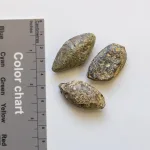Jerusalem, 29 October, 2025 (TPS-IL) — Israeli scientists have developed a fast new method to see how medicines move through the skin, opening the door to safer, more effective skin treatments, Hebrew University of Jerusalem announced on Wednesday.
The study, led by Dr. Katy Margulis at the Hebrew University of Jerusalem’s School of Pharmacy, combined mass spectrometry imaging with an automated tool to map drug distribution across skin layers in just ten minutes — without dyes or chemical labels.
“This approach gives us a clear, label-free snapshot of where a drug actually goes once applied to the skin,” Margulis said. “It allows researchers to optimize delivery systems quickly and more accurately.”
Until now, measuring how far a drug penetrates beneath the skin was slow and labor-intensive, often taking days and relying on indirect fluorescent methods. The new method reduces this to minutes, letting scientists test multiple formulations and track absorption in near real time.
To test the method, the team examined three nanoscale delivery systems of terbinafine, a common antifungal, each designed to reach different skin depths. The imaging revealed clear differences in how far the drug traveled and how it spread within the layers. “We can now monitor drug absorption in near real time,” Margulis explained. “This opens the door to faster, more precise treatments and better dosing.”
The new imaging method could also improve the development of a wide range of treatments. Antifungal creams and other targeted therapies can be designed to reach the right depth, increasing effectiveness while minimizing side effects. Transdermal drugs like hormone patches or pain-relief gels can be optimized to deliver consistent doses into the bloodstream. The technique also benefits cosmetic products, such as anti-aging serums and moisturizers, by ensuring active ingredients reach the layers of skin where they have the greatest effect.
The findings were published in the scholarly journal, Small Science.
The implications extend further. The technique could improve the safety and effectiveness of corticosteroids, retinoids, and other topical medications. By showing exactly where active ingredients settle, the new method supports precise delivery and helps reduce side effects. Its automated analysis tool converts complex tissue data into clear visuals within minutes, making testing faster, safer, and more efficient.
“This tool allows for smarter, safer, and more efficient formulation testing,” Dr. Margulis added. “Ultimately, it helps bring better products to patients faster.” The method also allows kinetic studies, showing how quickly drugs penetrate and how deep they go—a key factor for medical and cosmetic uses.
“This technology is more than just a new lab tool,” Margulis said. “It shows us how to better understand drug delivery through the skin and improve therapies for every patient.”





























